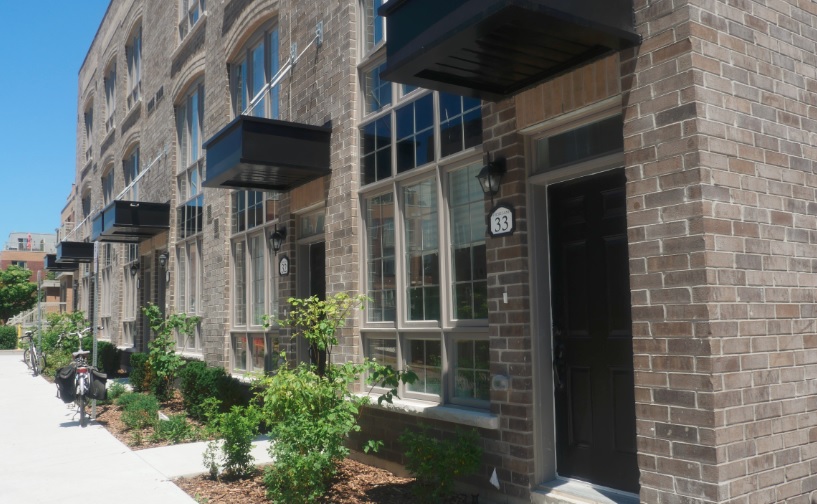For investors in Canada, owning and renting out multifamily properties is not the same capital building enterprise that it used to be. Although vacancy rates are decreasing, with a national average of 2.4 per cent in 2018 and rates much lower in larger cities like Toronto and Vancouver, cap rates are also being driven down, with multifamily homes offering the lowest rates in real estate. Typically, a cap rate of between 7 to 10 per cent was seen as a good return on investment. In Canada, investors can expect to see cap rates that do not exceed 5 per cent, due to the relative low risk of the investment and the rising cost of living. When selecting a rental property, investors need to start considering new options to unlock higher cap rates in a saturated market. One viable option that is gaining traction across larger, densely populated cities, is co-living.
What is co-living?
 The concept of co-living is not new, although it has become increasingly popular over the past few years. It offers residents a private, furnished bedroom with access to shared communal spaces, such as the kitchen, bathrooms, common living room and outdoor space. Unlike traditional apartments, co-living tenants pay one monthly bill, which includes rent, all utilities, cleaning services and basic common provisions such as towels, kitchen supplies and other necessities. Because of the all-inclusive nature of co-living, it is seen as being similar to a hotel stay, although the duration is longer, typically on a 6-month lease.
The concept of co-living is not new, although it has become increasingly popular over the past few years. It offers residents a private, furnished bedroom with access to shared communal spaces, such as the kitchen, bathrooms, common living room and outdoor space. Unlike traditional apartments, co-living tenants pay one monthly bill, which includes rent, all utilities, cleaning services and basic common provisions such as towels, kitchen supplies and other necessities. Because of the all-inclusive nature of co-living, it is seen as being similar to a hotel stay, although the duration is longer, typically on a 6-month lease.
Co-living also sets itself apart by building communities and relationships among tenants. By taking away the pain points of living with others — such as cleaning — it allows tenants to bond with one another. Roommate selection is highly strategic and done through meticulous algorithms that place an emphasis on common interests, goals and living styles to maximize compatibility. Community events usually occur regularly in co-living homes as well. Birthdays, barbecues and other social activities are often planned to give members a chance to interact and take advantage of what their city and community offers. For this reason, co-living is frequently used for newcomers or for people looking to build their network. With an increase in remote and freelance workers, co-living can fill in the gap socially and can offer shorter leases to entice people who may move frequently for work.
The difference between co-living and other rental properties
Similar to multifamily rentals, in co-living homes, there are multiple leaseholders involved. The difference is that each leaseholder occupies a single room, and there are multiple leases in one home. This takes the stress off of the tenant, as their lease is separate from their roommates and will not be impacted by others moving out. It also helps investors, as they can charge per room, resulting in a higher yield on the property overall.
To promote higher rental rates, co-living homes need to be newly renovated and modern. High-end appliances and furnishings are investments and will help raise the prices of each room. This is important because co-living homes also require the investor to pay for expenses that traditional multifamily homes would not, such as internet, cable and other amenities. Individuals who are looking for convenience are willing to pay a premium for their room in a co-living home, as they are offered more amenities than a traditional bachelor or one bedroom apartment. This can yield up to 40 per cent more than a traditional rental price, while still offering residents around a 20 per cent discount to living alone.
Building for co-living
There are many different models for co-living houses. Some take existing townhomes and renovate them to suit co-living needs, while others take large houses and rent rooms out individually. Some operate in condos, using three-bedroom units or entire
floors to create a space for co-living. Whichever way the co-living space works, there are some important elements needed to create a luxurious space that will appeal to tenants.
In general, co-living homes are made up of a minimum of three bedrooms and three bathrooms. They also typically only have one kitchen in them, and as the kitchen is the most expensive room to renovate, this helps to bring costs down. Some properties boast further amenities; rooftop patios with city views, workout rooms or offices all help add value to the property and will help to yield higher return. When building for co-living, considering the needs of the tenants is key, including amenities outside of the house. Proximity to city centres, transit and a vibrant community will help newcomers feel at ease in a new city.
To create the community aspect of co-living, many co-living providers are looking to invest in multiple homes in a close radius. With the extra elements involved in managing a co-living facility, this helps the efficiency of running the operation. This will also help foster a sense of community outside of the house. On top of that, there is the expectation that events will be planned for all of the co-living members. Whether this is a monthly or weekly endeavor is up to the provider, but social events help individuals meet each other, which will help them feel comfortable and encourage them to stay in a co-living home.
Managing a co-living home
Although owning and managing a co-living property can seem daunting, many co-living homes operate in a similar way to hotels. Traditionally, there are those who own the co-living buildings, but the property management is outsourced to co-living facility management experts. The building owner will enter into a long-term management agreement with a co-living provider, which could last multiple years, where rent and income is shared among the owner and provider. Unlike rental agreements, management agreements take the stress off the building owner to select tenants, run events, worry about utilities or invest in furnishings. It will ensure consistent revenue and high rents for the property, without the overhead costs.
The co-living provider may renovate the home to increase rental value, which also increases property value for the building owner. Also, the nature of co-living ensures that the property manager retains rights to go to the property and inspect it regularly. This ensures that the tenants act respectfully to each other and to the space. For real estate investors, this management system alleviates the stress of having to invest the time into creating a functioning co-living environment.
With vacancy rates and cap prices decreasing, it will be important for building managers and owners to look at alternatives for increasing revenue on rental properties. Co-living is the key to an evolving industry where renters are expecting more and are willing to pay for these luxuries, without putting the burden on building owners and investors.
Roman Bodnarchuk is the founder and CEO of Sociable Living, Canada’s first co-living community, located in Toronto.





